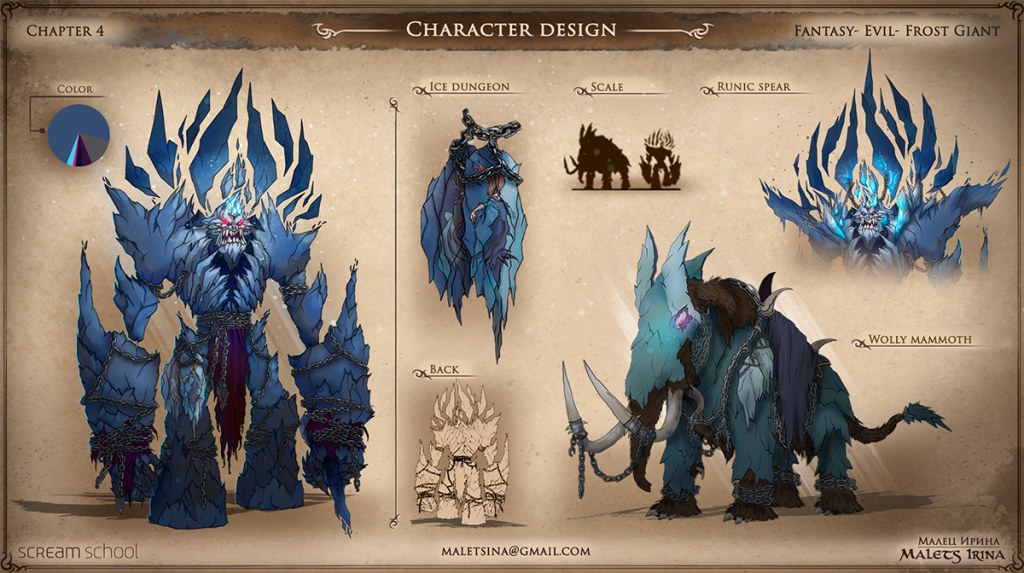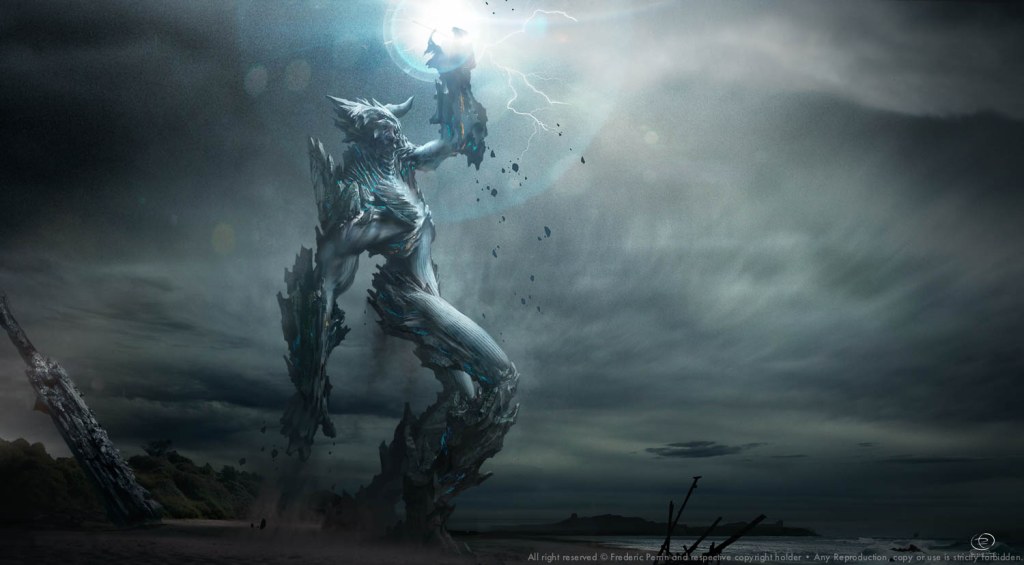Giant Concept Art: Unveiling the Majesty of Imagination
Hello, Art Enthusiast! Welcome to the captivating world of giant concept art, where creativity knows no bounds and imagination reigns supreme. In this article, we will delve into the intricacies of this mesmerizing art form, exploring its origins, significance, and the impact it has on the artistic landscape. Join us on this enchanting journey as we unravel the secrets behind giant concept art and discover how it continues to inspire and awe audiences worldwide.
Introduction
The realm of imagination has always been a fertile ground for artists to express their deepest emotions and ideas. Giant concept art is a manifestation of this limitless imagination, where artists bring their larger-than-life visions to reality. It involves creating astonishing artworks on a massive scale, often showcasing breathtaking landscapes, mythical creatures, futuristic cities, and other awe-inspiring subjects.
Giant concept art serves as a visual representation of the artist’s imagination, captivating viewers and transporting them into fantastical realms. Through intricate details, vibrant colors, and immense proportions, these artworks evoke a sense of wonder and allow audiences to immerse themselves in a world beyond their wildest dreams.
In this article, we will explore the what, who, when, where, why, and how of giant concept art, giving you a comprehensive understanding of this fascinating art form.
What is Giant Concept Art?

Image Source: behance.net
Giant concept art is an artistic genre that involves creating extraordinary artworks on a monumental scale. It combines elements of fantasy, science fiction, and surrealism, resulting in visually stunning compositions that push the boundaries of imagination. These artworks often serve as a visual guide or inspiration for various forms of media, including films, video games, and literature.
Embracing the concept of grandeur, giant concept art allows artists to showcase their creativity in a way that captivates and mesmerizes viewers. By exploring vast landscapes, mythical creatures, and futuristic environments, artists can transport audiences into enchanting worlds that exist only within their imagination.
Who Creates Giant Concept Art?
Giant concept art is crafted by talented artists who possess a unique blend of technical skill and boundless imagination. These artists often work in the entertainment industry, collaborating with film studios, video game companies, and publishing houses to bring their visions to life.
From digital artists proficient in software such as Photoshop and 3D modeling programs to traditional painters adept in utilizing various mediums, the creators of giant concept art hail from diverse artistic backgrounds. Their ability to visualize and materialize awe-inspiring worlds is what sets them apart and propels the genre forward.
When Did Giant Concept Art Emerge?

Image Source: fredericperrin.com
The origins of giant concept art can be traced back to ancient civilizations, where larger-than-life murals and sculptures were created to depict mythological tales and historical events. However, the term giant concept art as we know it today gained prominence with the rise of the entertainment industry and the demand for visually stunning concepts for films, video games, and other media forms.
In recent years, giant concept art has gained popularity among artists and enthusiasts alike, with dedicated exhibitions and galleries showcasing these awe-inspiring creations. The genre continues to evolve, reflecting the ever-expanding boundaries of the human imagination.
Where Can You Find Giant Concept Art?
Giant concept art can be found in various forms and locations, ranging from art galleries and museums to online platforms and specialized events. Exhibitions dedicated to this art form offer visitors the opportunity to witness these monumental artworks up close, allowing them to appreciate the intricate details and immerse themselves in the artist’s vision.
Furthermore, the digital realm has provided artists with a platform to showcase their works to a global audience. Websites, social media platforms, and online art communities serve as virtual galleries that allow art enthusiasts worldwide to explore and engage with giant concept art.
Why is Giant Concept Art Important?
Giant concept art plays a crucial role in the creative industry, serving as a source of inspiration for filmmakers, game developers, and storytellers. These artworks provide a visual foundation from which entire worlds can be built, helping to shape the narrative and aesthetics of various forms of media.
Moreover, giant concept art sparks the imagination of viewers, encouraging them to dream beyond the confines of reality. It invites audiences to explore unknown territories, question the boundaries of possibility, and ignite their own creative sparks. By transcending the limits of the tangible world, giant concept art expands our perception of what is possible and fuels our thirst for adventure.
How is Giant Concept Art Created?
The creation process of giant concept art varies depending on the artist’s preferred medium and technique. Digital artists often utilize software such as Photoshop, Corel Painter, or 3D modeling programs to construct intricate landscapes and characters in a virtual environment.
Traditional artists, on the other hand, employ a wide range of mediums, including acrylics, oils, watercolors, and mixed media, to bring their visions to life on canvas or other physical surfaces. The physicality and texture of traditional mediums add a unique dimension to the artwork, enhancing the overall experience for viewers.
The Pros and Cons of Giant Concept Art
Like any art form, giant concept art has its own set of advantages and disadvantages. Let’s explore some of the key aspects:
Advantages of Giant Concept Art:
1. Immersive Experience: Giant concept art transports viewers into enchanting worlds, allowing for a deeply immersive and awe-inspiring experience.
2. Inspiration for Other Media: These artworks serve as a foundation for films, video games, and literature, inspiring creators in various entertainment industries.
3. Pushing Creative Boundaries: Giant concept art encourages artists to explore new frontiers of imagination and push the limits of their creativity.
4. Spectacle and Impact: The grand scale and attention to detail in giant concept art create a visual spectacle that leaves a lasting impression on viewers.
5. Community Building: Online platforms and art communities dedicated to giant concept art foster a sense of community, allowing artists and enthusiasts to connect and collaborate.
Disadvantages of Giant Concept Art:
1. Time-Intensive Process: Creating giant concept art on a large scale requires a significant investment of time and effort.
2. Limited Accessibility: Due to their size, giant concept art pieces may not be easily transportable, limiting their accessibility to a wider audience.
3. Costly Endeavor: The expenses associated with materials, studio space, and equipment for creating giant concept art can be substantial.
4. Limited Exhibition Spaces: Finding suitable venues to exhibit giant concept art can be challenging, as not all galleries or institutions have the capacity to accommodate such large artworks.
5. Subjectivity of Appeal: Giant concept art may not resonate with everyone’s artistic sensibilities, as personal preferences vary among viewers.
Frequently Asked Questions (FAQs)
1. What inspired the creation of giant concept art?
Giant concept art draws inspiration from various sources, including mythology, science fiction, fantasy literature, and the boundless depths of the human imagination.
2. Can anyone create giant concept art?
While anyone can attempt to create giant concept art, it requires a certain level of technical skill, creativity, and dedication to bring monumental visions to life.
3. Is giant concept art limited to digital mediums?
No, giant concept art can be created using both digital and traditional mediums. Artists can choose the medium that aligns with their creative vision and artistic preferences.
4. Are there any specific themes or subjects in giant concept art?
Giant concept art encompasses a wide range of themes and subjects, including futuristic cities, mythical creatures, vast landscapes, and otherworldly environments. The possibilities are limited only by the artist’s imagination.
5. How can I get involved in the giant concept art community?
To immerse yourself in the giant concept art community, you can join online platforms, participate in art forums or communities, attend exhibitions, and connect with fellow artists and enthusiasts who share your passion.
Conclusion
In conclusion, giant concept art is a mesmerizing art form that captivates audiences with its grandeur and boundless imagination. From awe-inspiring landscapes to mythical creatures and futuristic cityscapes, these artworks transport viewers into enchanting worlds beyond their wildest dreams.
While giant concept art presents its own set of challenges and limitations, its impact on the creative industry and the realm of imagination cannot be understated. As technology advances and artistic boundaries continue to expand, we can expect giant concept art to push the limits of what is possible, inspiring future generations of artists and capturing the hearts of art enthusiasts worldwide.
Final Remarks
Embarking on a journey through the realm of giant concept art allows us to witness the magic that unfolds when human creativity knows no bounds. As we delve into these monumental artworks, let us remember to appreciate the immense talent, dedication, and imagination that go into their creation.
Disclaimer: The information provided in this article is for educational and entertainment purposes only. The views and opinions expressed belong solely to the author and do not represent any professional advice or endorsement of specific artworks, artists, or techniques.